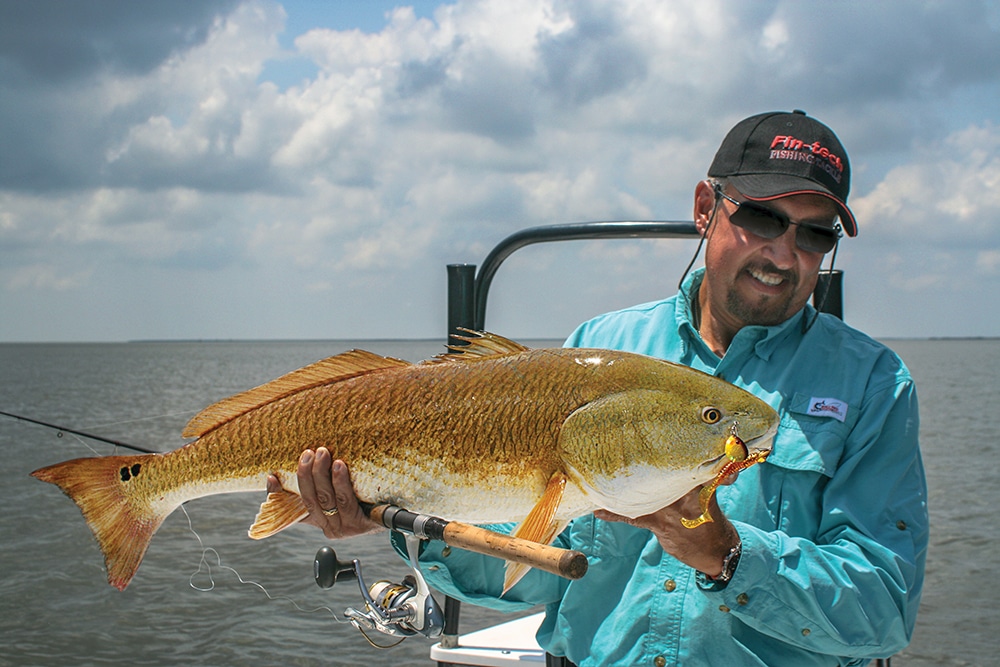
It’s been a while since my redfish-circuit days, but the lessons I learned during seven years on the pro tour continue to help me catch fish in all kinds of locations and conditions. Undoubtedly, the hours spent scouting and fishing every tournament afforded me ample opportunity to experiment with lures and techniques I probably wouldn’t have tried otherwise. The spinnerbait, a lure I’d previously only associated with freshwater bass fishing, quickly became one of my favorite options. Not only does it catch redfish in a number of situations, it allows for tinkering and tweaking, which appeals to my curious nature and improves my chances for success.
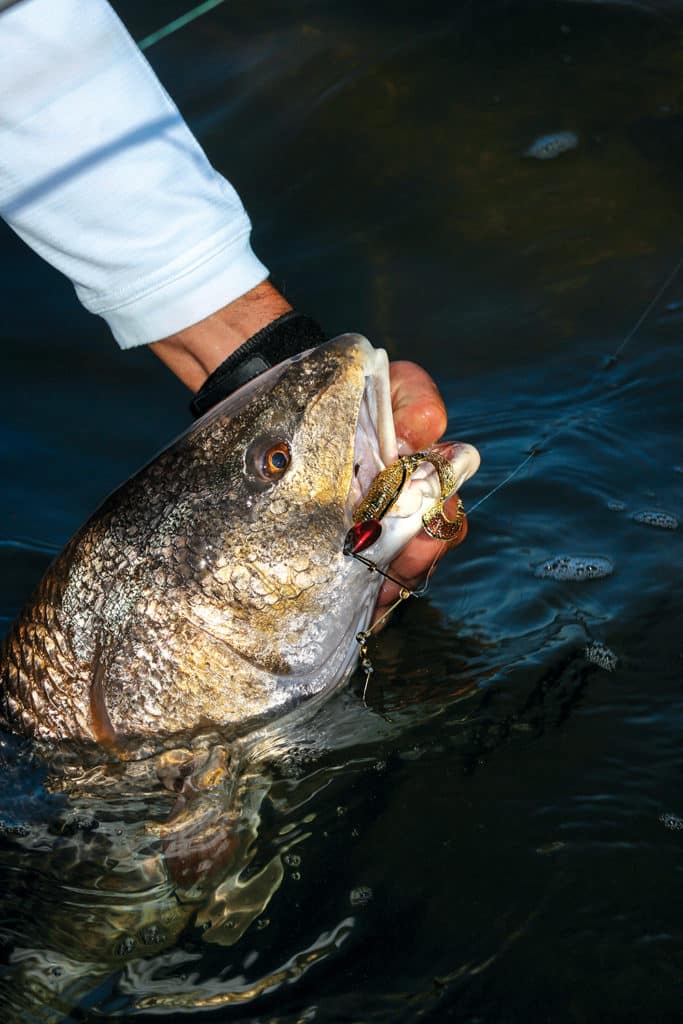
If you take a minute to consider the characteristics of the spinnerbait, you realize that its effectiveness derives from the same virtues that make the gold weedless spoon the top choice of so many redfish anglers. No lure is easier to use; all you do is cast and reel. And the vibration, the flash and the grass-shedding ability are all there, along with one big plus: versatility that spoons and other lures lack because they don’t allow for easy customizing, like spinnerbaits do. While there aren’t designated spinnerbaits for redfish, most anglers have narrowed down their favorites.
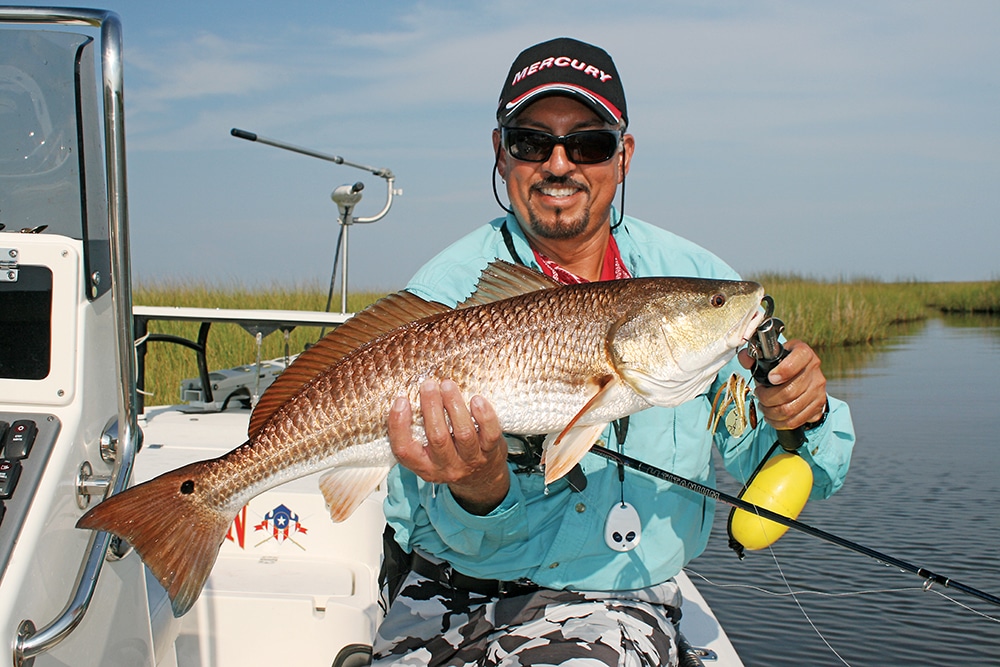
Spinnerbaits for salt water, unlike the type used in lakes and rivers, lack a permanently affixed weighted head opposite the blade. Instead, a safety pin-style clip or a split ring connects the metal arm holding the blade to a lead-head with a soft-plastic body or similar weighted lure, adding a realistic look, feel and swimming action to the flashy custom jewelry making a fuss an inch or two above it.
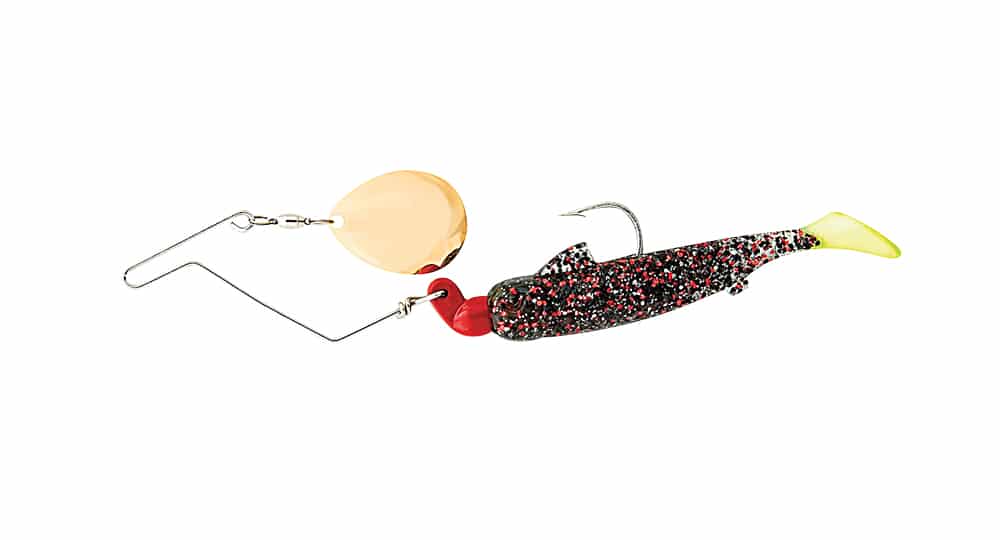
Custom Tailoring: While you can tinker a little with some crankbaits, tip a jig with a plastic grub, or add a curly tail to the hook on a weedless spoon, with redfish spinnerbaits you mix and match components for a lure tailored to the situation at hand. A muddy Louisiana bayou demands more vibration and more flash. You get both by simply changing the blade, a quick procedure that only entails sliding one blade off the split ring and sliding on the replacement. For spooky Florida redfish in clear water, you want a more lifelike appearance, so opt for a spinnerbait with a soft-plastic body that resembles the local forage.
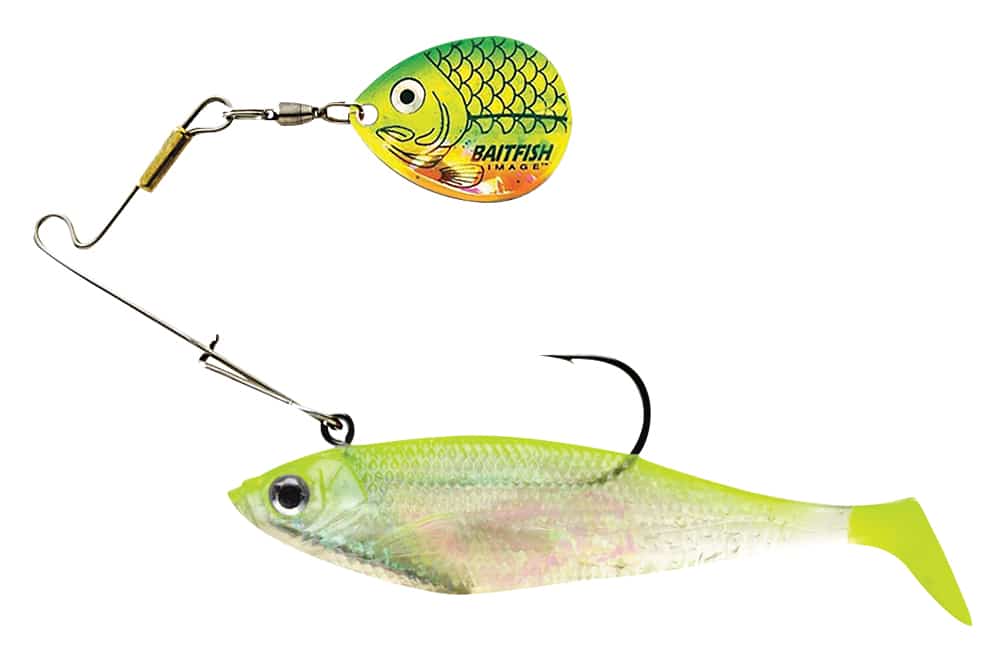
Versatile Clip-Ons: I favor the clip-on type because they allow for easier and quicker customizing. In seconds, I can combine different swimbaits with the desired blade. Imagine presenting a lifelike imitation of whatever reds are feeding on, down to the right size and color, while still cashing in on the power of attraction of a shiny, gyrating blade.
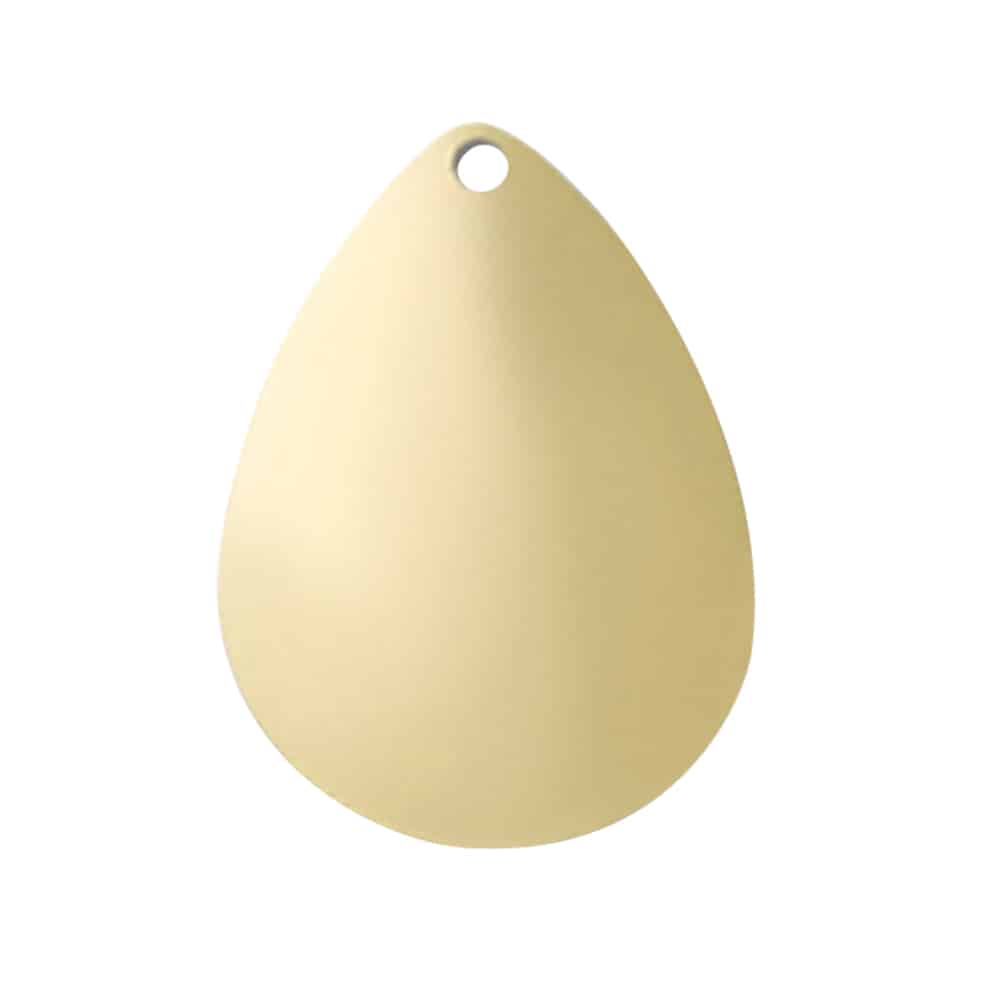
Good Vibrations Not all spinner blades are created equal, the various shapes and sizes have different attributes, so you should match the blade to the situation at hand. A Colorado blade, the most popular, is the best choice when you need a slow retrieve and maximum vibration. It also creates the most lift, so it’s a great option for shallow water. However, this blade shape does not produce the most flash.
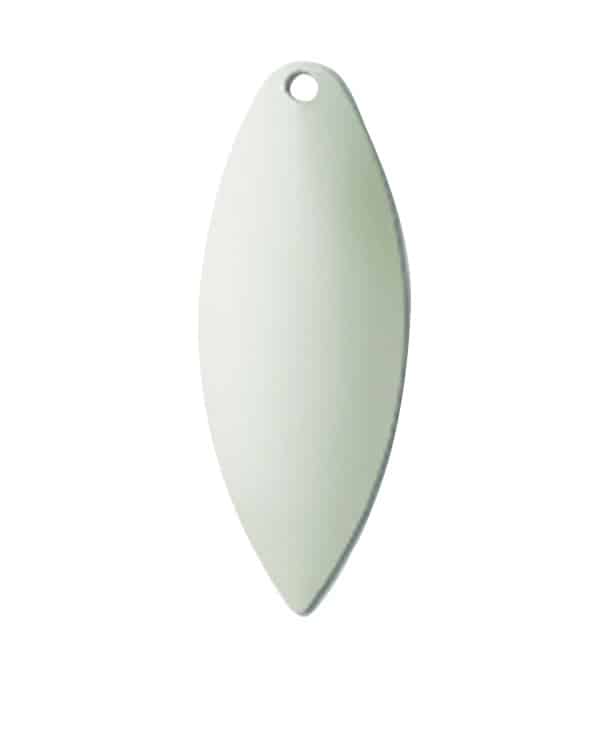
Maximum Flash: If the situation calls for covering a lot of water fast and producing maximum flash, opt for a willow blade. Thanks to its more slender shape, this type of blade also goes through the grass better, so it’s a good choice when fishing in thick vegetation. Nevertheless, the willow blade creates the least amount of lift, so it’s not ideal for slow retrieves in shallow water.

Good All-Rrounder: The Indiana blade, falling somewhere in between a Colorado and a willow, works at a wider range of speeds, which makes it ideal for various applications, including in-line spinnerbaits. Keep in mind, though, that it does not create quite as much lift or vibration as a Colorado or as much flash as a willow blade.
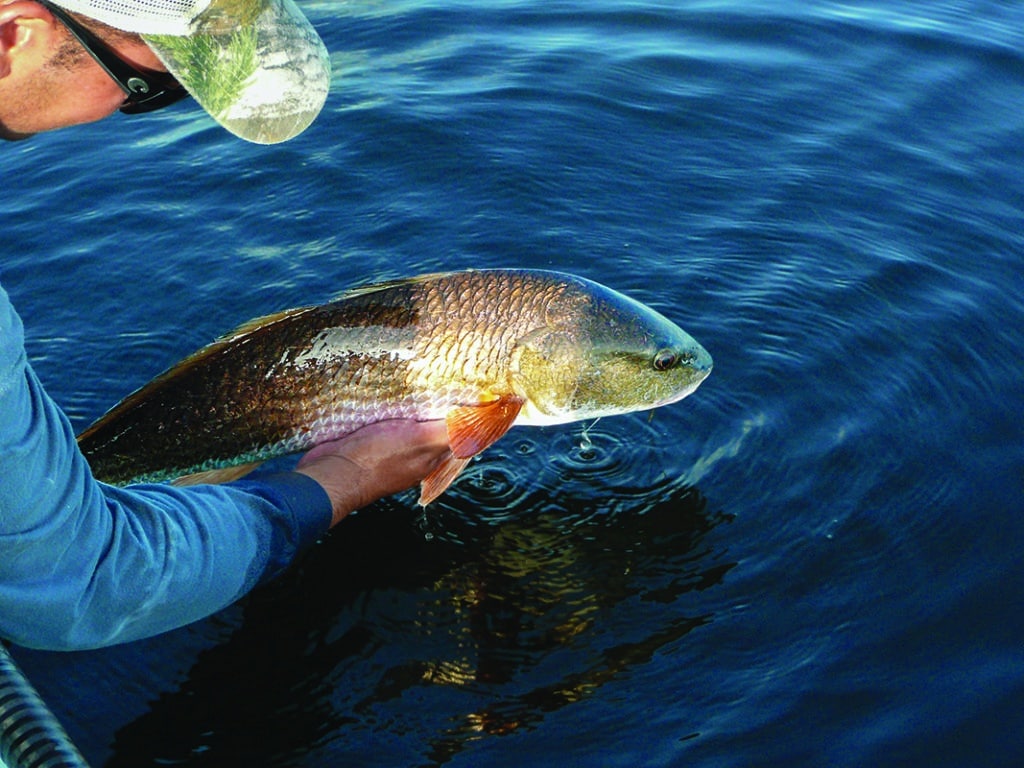
Proper Fit: When it comes to sizes, most redfish anglers prefer No. 3 and 4 versions of the three blade types. Some manufacturers offer blades in half sizes, so I carry a few No. 2.5s and 3.5s as well. Understand that the lower the number, the smaller the blade, and remember the larger the blade, the more vibration and flash. Of course, No. 3 Colorados, Indianas and willows won’t all work well in conjunction with the same lure body, nor will they reach the same depth at a given speed. I find ⅜-ounce jigs and lure bodies work well in most situations, but I carry a few in ¼-ounce for very shallow water and some ½-ounce for deep water and strong currents. Arm yourself with a couple of each and do some field-testing to select the proper blades.
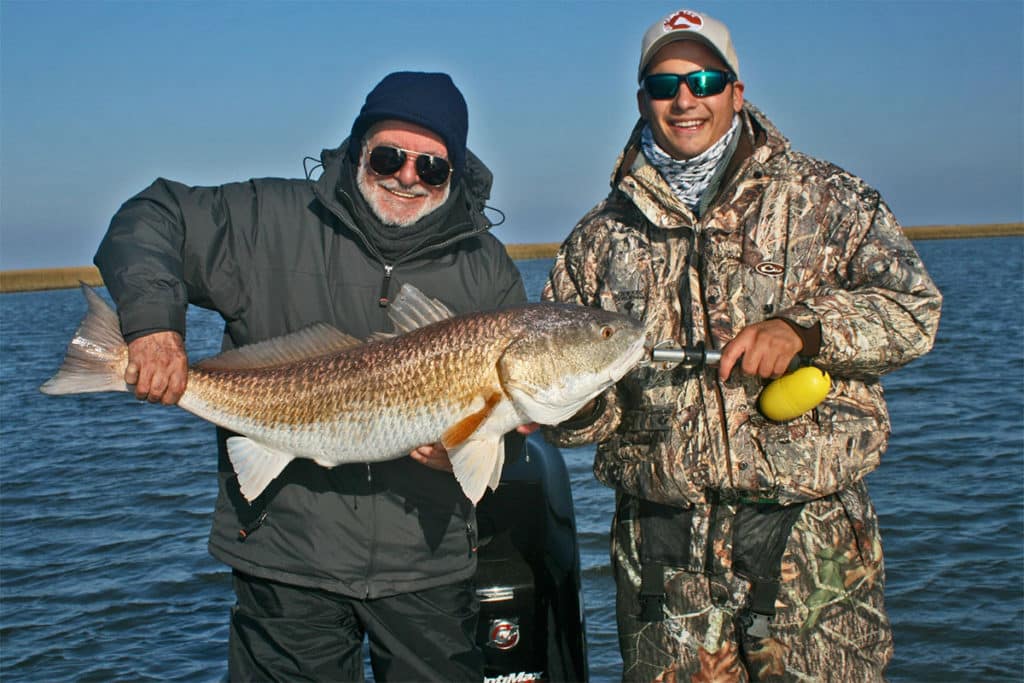
Popular Setups: The best redfish lures are those that move slowly but have a lot of action and flash. A spinnerbait has all of the above. Because of its versatility, the most popular setup is a 3/8-ounce body with a No. 3 Colorado blade, but a 1/2- or 3/4-ounce body excels in deep water and in a strong current. A larger Colorado blade, typically No. 4, produces more flash and vibration, making it easier for the fish to detect the lure in muddy or stained water. In clear water or when the redfish are skittish, opt for a realistic swim bait or soft-plastic lure body and scale down the hardware.
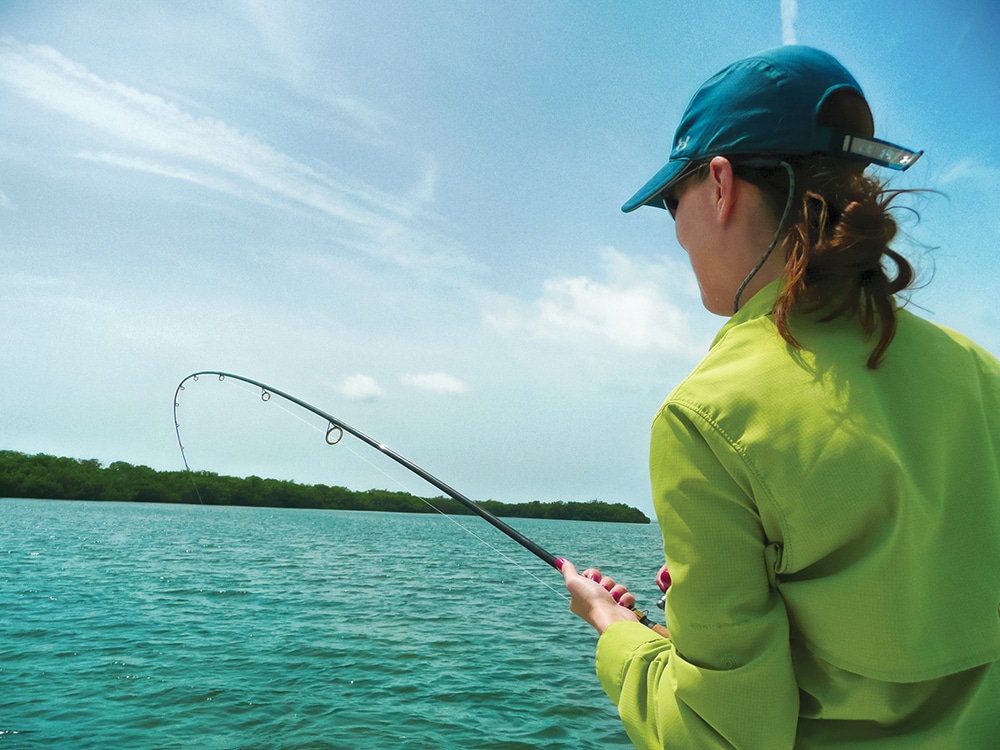
Rhythm and Reds: The steady vibrating action of a spinnerbait is telegraphed through the fishing line to the rod. An interruption in the rhythm of the vibrations usually signals a strike from a redfish and tells the angler it’s time to set the hook.
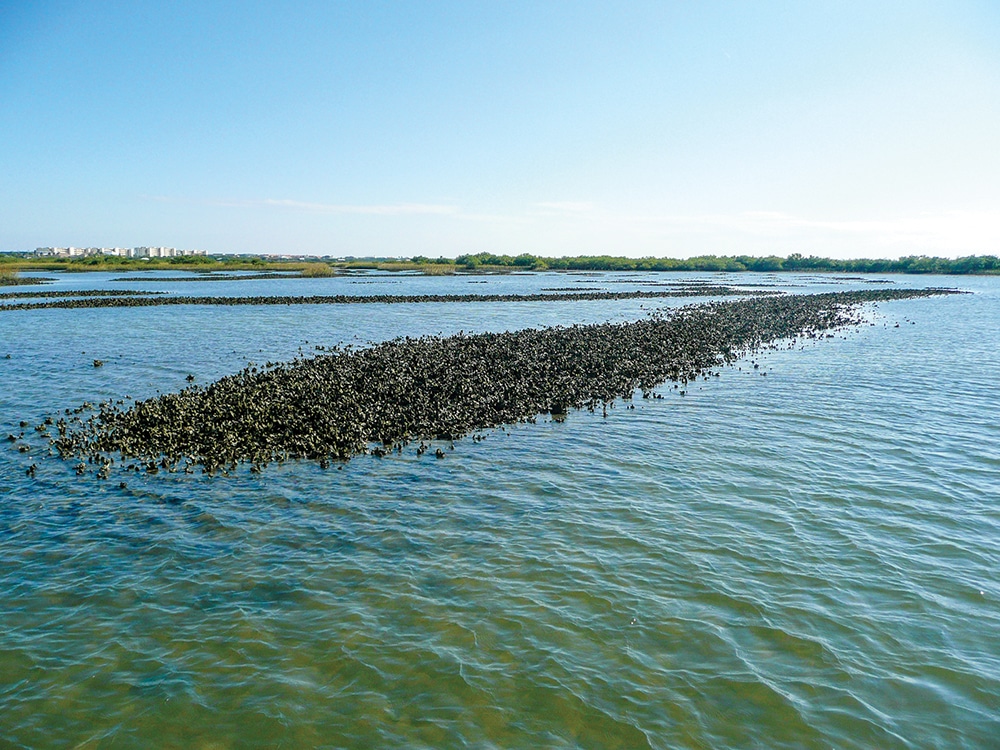
Red Zone Favorite: The spinnerbait is a superb search lure that draws strikes from redfish in clear or dirty water, shallow or deep, and around all sorts of bottom structure. Cast one along oyster bars, mangrove shorelines, grass lines, submerged stumps, and other likely redfish hangouts to help you pinpoint the fish’s whereabouts.
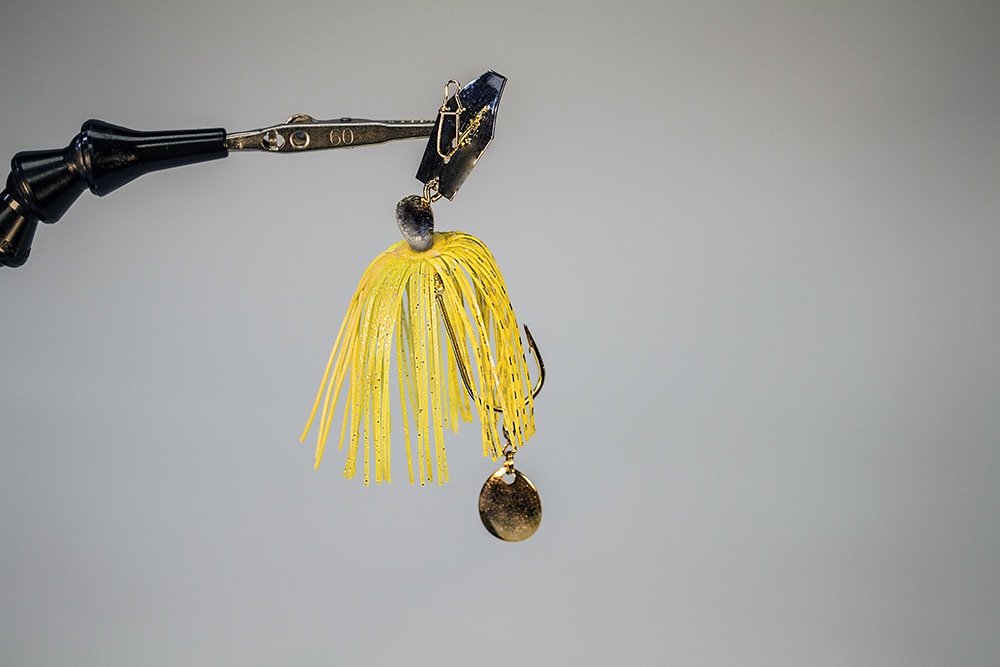
Seductive Chatter: The Chatterbait, a clever variation on the conventional spinnerbait, uses a metallic coffin-shaped fin ahead of a lead-head to create flash and the trademark side-to-side shimmy that makes the entire lure appear to swim. Fished at a slow crawl, Chatterbaits still produce a ton of action. After some tinkering, I found that replacing the skirt with a more streamlined version, then attaching a swivel with a split ring and a No. 0 Colorado blade at the hook bend makes the entire concoction even more enticing to redfish. The Achilles’ heel is the snap, which could come open after fighting a couple of big fish, so check it regularly.
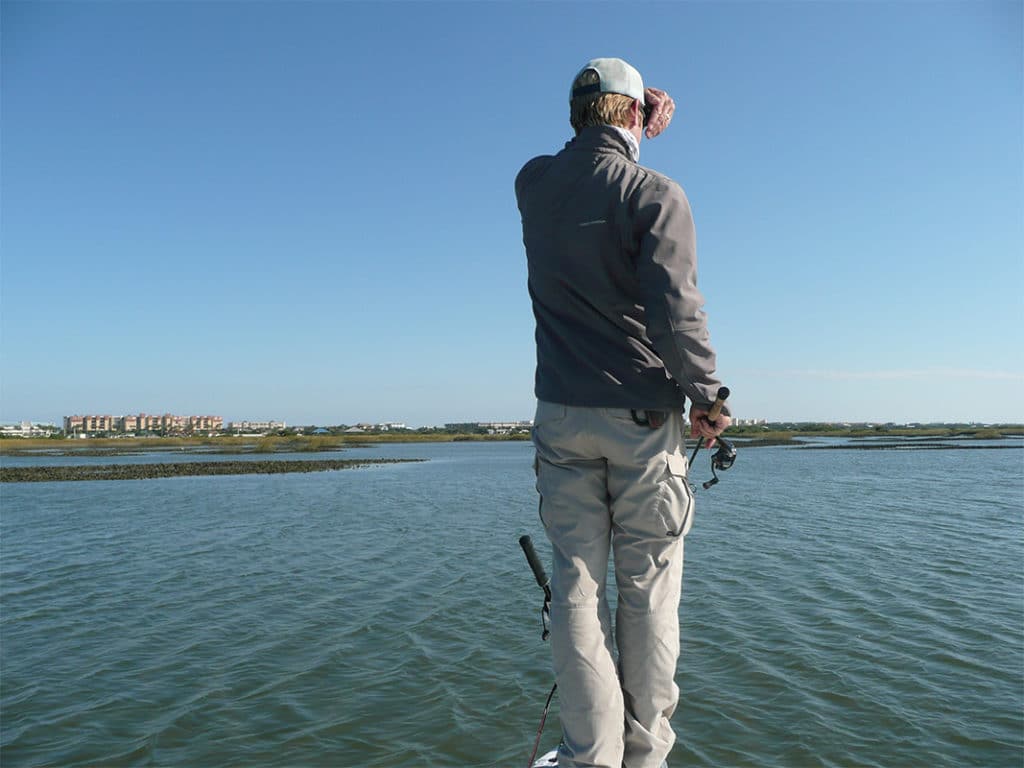
Color Combos: The choices in blade colors are practically endless: metallic and non-metallic options, chartreuse, hot pink and other neon colors — even mirror and holographic finishes. Like most of my redfish rigs, I take a simplistic approach, carrying in my box the basic gold and silver blades, along with the shiniest finishes I can find in natural color combinations, like chartreuse-and-gold; chartreuse-and-silver; chartreuse-and-pearl; and red-and-pearl. Threadfin herring, pilchards and pogies have an iridescent green back, silvery sides and a pearl belly, which is why I choose these color combinations. Additionally, I often use small swimbaits with clip-on spinners, and it’s easy to find them in color schemes to match such blades.
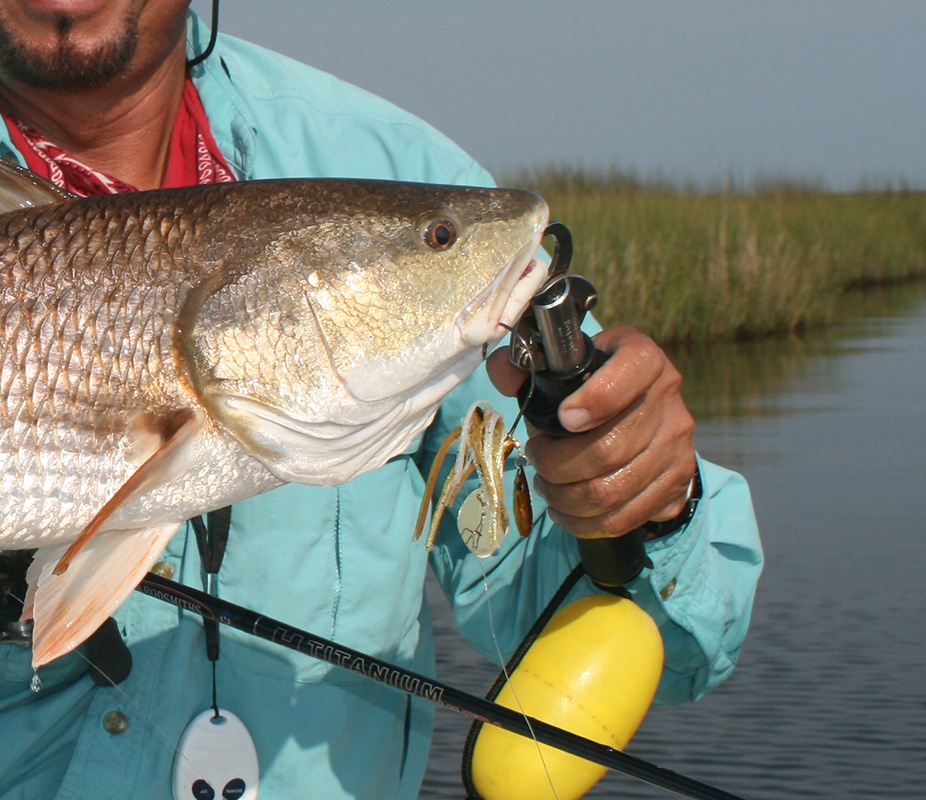
More often than not, the key to success is adaptation. And a lure that lets you meet changing conditions and the behavior of the quarry, like the spinnerbait does, puts the odds in your favor. Once you give spinnerbaits for redfish a try, you’ll quickly recognize their versatility. And I bet you’ll appreciate some extra versatility in your tackle box the next time you chase after redfish.









